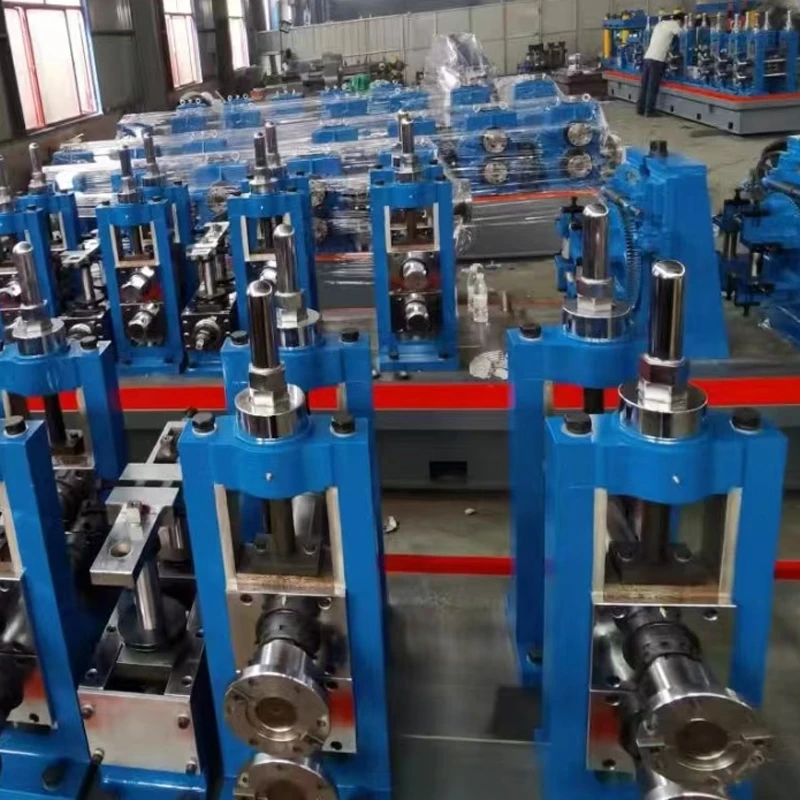shear bending machine
Understanding Shear Bending Machines Revolutionizing Metal Fabrication
In the world of metal fabrication, precision and efficiency are paramount. Among the numerous tools and machines that have revolutionized this industry, shear bending machines stand out as essential equipment for achieving high-quality bends in metal sheets and plates. This article explores the function, types, advantages, and applications of shear bending machines, highlighting their importance in contemporary metalworking environments.
What is a Shear Bending Machine?
A shear bending machine, also referred to as a shear brake or a bending brake, is a piece of equipment designed to perform two primary operations shearing and bending metal sheets. The shearing process involves cutting the metal, while the bending function allows for the shaping of the metal into specific angles and forms. This dual capability makes shear bending machines invaluable for fabricators who require precise metal cuts and bends in one go.
How Does a Shear Bending Machine Work?
At its core, a shear bending machine consists of three main components a cutting blade, a bending beam, and a support table. The operational process begins with placing a sheet of metal on the support table. The cutting blade is then activated to shear the metal to the desired size. Following this, the bending beam is engaged, applying force to bend the metal sheet into the desired angle, which can range from simple folds to complex curves.
Modern shear bending machines are often equipped with hydraulic systems that enable smoother operation and more precise control over bending angles and cutting depth. Operators can set the parameters through digital controllers, ensuring repeatability and accuracy in production runs.
Types of Shear Bending Machines
Shear bending machines vary widely in design and functionality to suit different needs and applications. Here are some common types
1. Manual Shear Bending Machines These require operators to physically control the shearing and bending processes. While they are generally less expensive, they demand more skill and are often slower than automated counterparts.
2. Hydraulic Shear Bending Machines Utilizing hydraulic power, these machines offer more force and flexibility, making them ideal for thicker materials and complex geometries.
3. Electric Shear Bending Machines These machines rely on electric motors for operation, providing high precision and lower operational costs over time.
4. CNC Shear Bending Machines Computer Numerical Control (CNC) machines are the pinnacle of automation in this category. They allow for precise programming of cutting and bending tasks, significantly reducing human error and increasing production speed.
Advantages of Shear Bending Machines
shear bending machine

The integration of shear bending machines into manufacturing processes brings a host of advantages
- Precision Modern shear bending machines deliver high levels of accuracy, ensuring that every cut and bend is consistent and meets specified tolerances.
- Efficiency By combining shearing and bending in one operation, these machines allow for faster production times and reduced need for multiple setups.
- Versatility With their ability to work with various materials, including aluminum, stainless steel, and mild steel, shear bending machines can accommodate a wide range of fabrication projects.
- Space-Saving As a dual-function machine, shear bending units take up less floor space than separate shearing and bending machines, allowing for more efficient use of workshop areas.
Applications of Shear Bending Machines
Shear bending machines are utilized in various industries, including
- Automotive Manufacturing For creating parts and panels that require precise bends and cuts.
- Construction Used for producing building frames, supports, and other structural elements.
- HVAC Essential for fabricating ductwork and other components requiring specific shapes and sizes.
- Signage Helping in the production of metal signs with unique shapes and finishes.
Conclusion
In conclusion, shear bending machines play a vital role in modern metal fabrication, offering efficiency, precision, and versatility. As industries continue to advance, the demand for quality and speed in production processes will only increase, making the shear bending machine an indispensable tool for fabricators aiming to stay competitive. With continuous innovations in technology, these machines are set to become even more powerful, further enhancing the capabilities of metalworking sectors worldwide.
-
High Frequency Straight Seam Welded Pipe Production Line-BzZhou Xinghua Machinery Equipment Manufacturing Co., LTD.|Precision Welding, High EfficiencyNewsJul.30,2025
-
High Frequency Straight Seam Welded Pipe Production Line|BzZhou Xinghua|Precision Welding&EfficiencyNewsJul.30,2025
-
High Frequency Straight Seam Welded Pipe Production Line - BzZhou Xinghua|Precision Engineering&EfficiencyNewsJul.30,2025
-
High-Frequency Straight Seam Welded Pipe Production Line-BzZhou Xinghua Machinery Equipment Manufacturing Co., LTD.NewsJul.30,2025
-
High-Frequency Straight Seam Welded Pipe Production Line-BzZhou Xinghua Machinery Equipment Manufacturing Co., LTD.|Precision Manufacturing, High EfficiencyNewsJul.30,2025
-
High Frequency Straight Seam Welded Pipe Production Line-BzZhou Xinghua Machinery Equipment Manufacturing Co., LTD.|Precision Steel Pipe Manufacturing&Industrial EfficiencyNewsJul.29,2025


